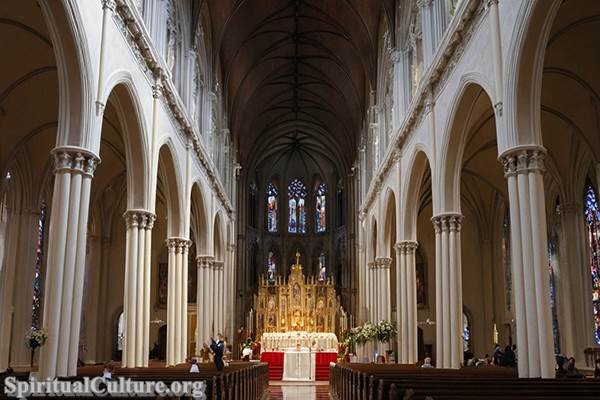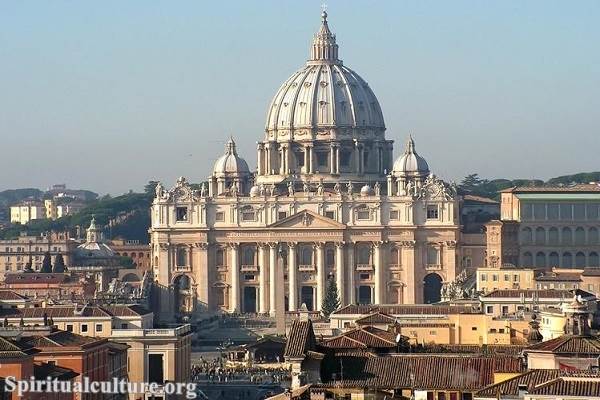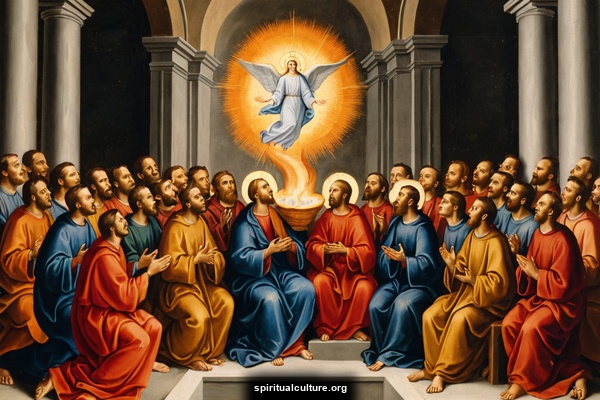Explore how the Catholic Church is organized from the local parish to the universal papacy — a sacred hierarchy of service.
The Catholic Church is one of the oldest and most structured religious institutions in the world — a spiritual body that spans continents, cultures, and centuries. For many, it may appear as a vast and mysterious organization, but behind its grand rituals and ancient traditions lies a deeply ordered framework rooted in service, communion, and apostolic mission.
Spiritual Culture invites you into a deeper understanding of this sacred structure — from the humble parish church at the corner of your neighborhood to the throne of St. Peter in the Vatican. This article explores the different levels of the Church’s organization, how authority and responsibility flow, and why this structure continues to shape the lives of over a billion Catholics today.
The Parish: Where Faith Meets Everyday Life
The Foundation of Community and Worship
At the heart of the Catholic Church is the parish — the local congregation where people gather for Mass, sacraments, and spiritual formation. It is here that the faith becomes real, relational, and rooted in community.
Each parish is entrusted to a parish priest (pastor), who is ordained to serve, teach, and shepherd the faithful. The priest celebrates the Eucharist, hears confessions, baptizes children, blesses marriages, and walks with people through every stage of life.
“The parish is not an outdated institution… It is the presence of the Church in a given territory, an environment for hearing God’s word.”
— Pope Francis, Evangelii Gaudium
In this local setting, the Church becomes family — where people pray, mourn, rejoice, and grow in love together.
The Diocese: A Network of Parishes under a Shepherd
The Bishop’s Role as Teacher and Pastor
A group of parishes is organized into a diocese (or archdiocese, in larger or more prominent areas), led by a bishop. The bishop is a successor to the apostles, ordained to teach the faith, govern the diocese, and sanctify its people through the sacraments.
Each bishop:
- Oversees doctrine and liturgy in his territory
- Ordains new priests and deacons
- Ensures faithfulness to Catholic teaching and discipline
- Represents the unity of the Church in his diocese
The bishop’s cathedral — from the Latin cathedra, meaning “chair” — is the mother church of the diocese, symbolizing his teaching authority.
“The bishops have by divine institution taken the place of the apostles as pastors of the Church.”
— Lumen Gentium, Vatican II
In essence, the bishop serves as the spiritual father of all the faithful in his diocese.
Episcopal Conferences: Regional Collaboration
Serving the Church Nationally and Regionally
Bishops from a particular country or region gather in episcopal conferences (such as the U.S. Conference of Catholic Bishops or the Bishops’ Conference of India). While these conferences don’t possess doctrinal authority independently, they foster collaboration, address social issues, and provide united guidance to their communities.
These bodies:
- Issue pastoral letters
- Respond to national events and laws
- Promote liturgical and educational unity
- Support missions and charitable work
Through these gatherings, the bishops share wisdom, confront challenges collectively, and embody the Church’s commitment to regional pastoral care.
The College of Bishops and Apostolic Succession
Unity Under Christ Through Apostolic Continuity
Together, all bishops form the College of Bishops, united with and under the Pope. This global body maintains apostolic succession — the unbroken line of ordination going back to the apostles themselves.
This succession is not just historical. It ensures that the Church remains:
- Faithful to the teaching of Christ
- Sacramentally connected to the original community of believers
- Spiritually united across time and space
As the Catechism of the Catholic Church states:
“This episcopal body has no authority unless united with the Roman Pontiff, Peter’s successor, as its head.”
— CCC 883
This communion with the Pope is what maintains doctrinal unity across the world.
The Cardinals: Advisors and Electors of the Pope
A Global College of Counselors
Cardinals are senior bishops and priests appointed by the Pope to serve as his principal advisors and collaborators. They often lead major archdioceses or serve in key roles in the Vatican (the Holy See).
Their most well-known duty is to gather in a conclave to elect a new Pope after the death or resignation of a pontiff. Only cardinals under the age of 80 are eligible to vote.
“The cardinalate does not confer power, but calls to greater service.”
— Spiritual Culture
Cardinals wear red to symbolize their readiness to defend the faith, even unto martyrdom.
The Pope: The Bishop of Rome and Successor of Peter
The Visible Head of the Universal Church
At the top of the Catholic hierarchy is the Pope, also known as the Supreme Pontiff or Holy Father. He is the Bishop of Rome and the spiritual leader of all Catholics.
The Pope is considered:
- Successor of St. Peter, to whom Christ said:
“You are Peter, and on this rock I will build my Church” (Matthew 16:18)
- Vicar of Christ, serving as the visible sign of Christ’s headship
- Pastor of the Universal Church, with authority in matters of faith and morals
While he is the highest authority, his power is not one of domination but of servant leadership — in the spirit of Christ, who washed the feet of His disciples.
“The Pope is not an absolute monarch whose thoughts and desires are law. On the contrary, the Pope’s ministry is a guarantee of obedience to Christ.”
— Pope Benedict XVI
The papacy embodies both continuity and renewal, guiding the Church through changing times while guarding eternal truths.
The Roman Curia: The Pope’s Administration
Governing the Global Church from the Vatican
The Roman Curia is the central administrative body of the Holy See. It assists the Pope in the governance of the universal Church, much like a cabinet supports a head of state.
It includes:
- Congregations (now called dicasteries) overseeing doctrine, bishops, worship, etc.
- Secretariats managing diplomacy and communications
- Tribunals for canonical (Church law) matters
Though largely unseen by everyday Catholics, the Curia ensures the Church’s unity and order on a global scale.
Religious Orders and Institutes
Serving Within and Alongside the Hierarchy
In addition to diocesan structures, the Church is blessed with a rich variety of religious orders and congregations — like the Jesuits, Franciscans, Benedictines, and Missionaries of Charity.
Members of these communities take vows of poverty, chastity, and obedience. They:
- Serve in education, healthcare, and missions
- Live in intentional communities
- Often work under local bishops, but also have their own internal governance
Their diverse charisms enrich the Church’s mission with unique spiritual gifts and apostolates.
Laity: The Church’s Living Body in the World
Called to Holiness and Apostolate
While the hierarchy is important, the laity — the non-ordained faithful — make up the vast majority of the Church. Through baptism, every Catholic is called to live as Christ’s witness in the world.
Laypeople:
- Participate in liturgy and parish life
- Serve as catechists, lectors, and volunteers
- Bring Gospel values into families, workplaces, and society
- Form movements and associations for evangelization and justice
“The Church is not a pyramid with the Pope at the top and the laity at the bottom. The Church is a living body, with Christ as the head and all members gifted for service.”
— Spiritual Culture
The mission of the Church is not confined to the sanctuary — it flows out into every street and home.
Reflect and Reimagine
The Catholic Church’s structure — from parish to papacy — is not merely bureaucratic. It is a spiritual architecture designed to serve, teach, and unite. Each level exists not for power, but for pastoral care — to help souls encounter Christ and grow in holiness.
As Spiritual Culture, we invite you to look not just at the external hierarchy, but at the inner harmony behind it — the heartbeat of a global faith family, alive in service, truth, and grace.
Whether you are sitting in a small wooden pew or standing beneath the dome of St. Peter’s, you are part of something enduring and divine.
This structure holds space for your story — and for the story of all who seek God.




